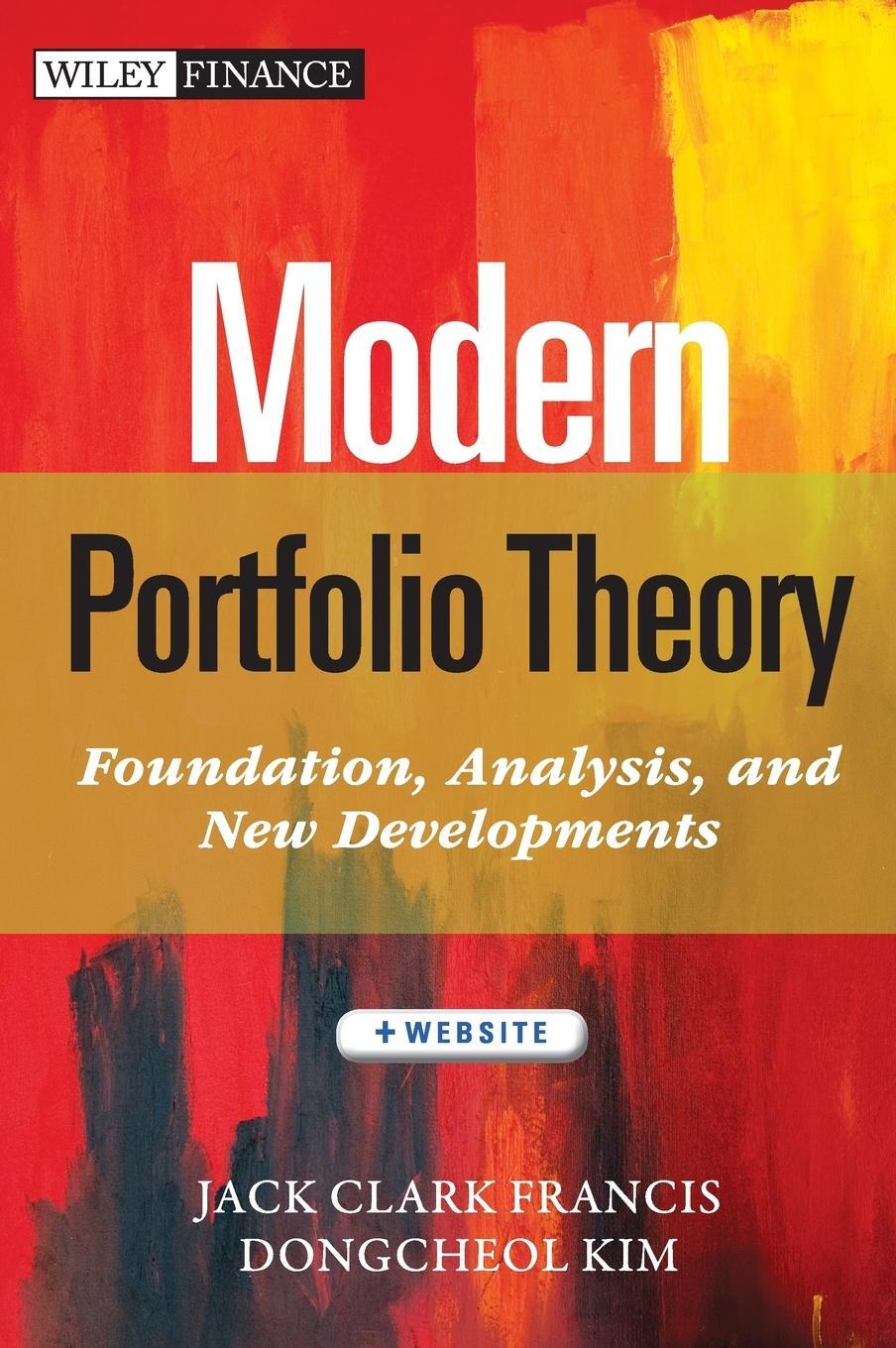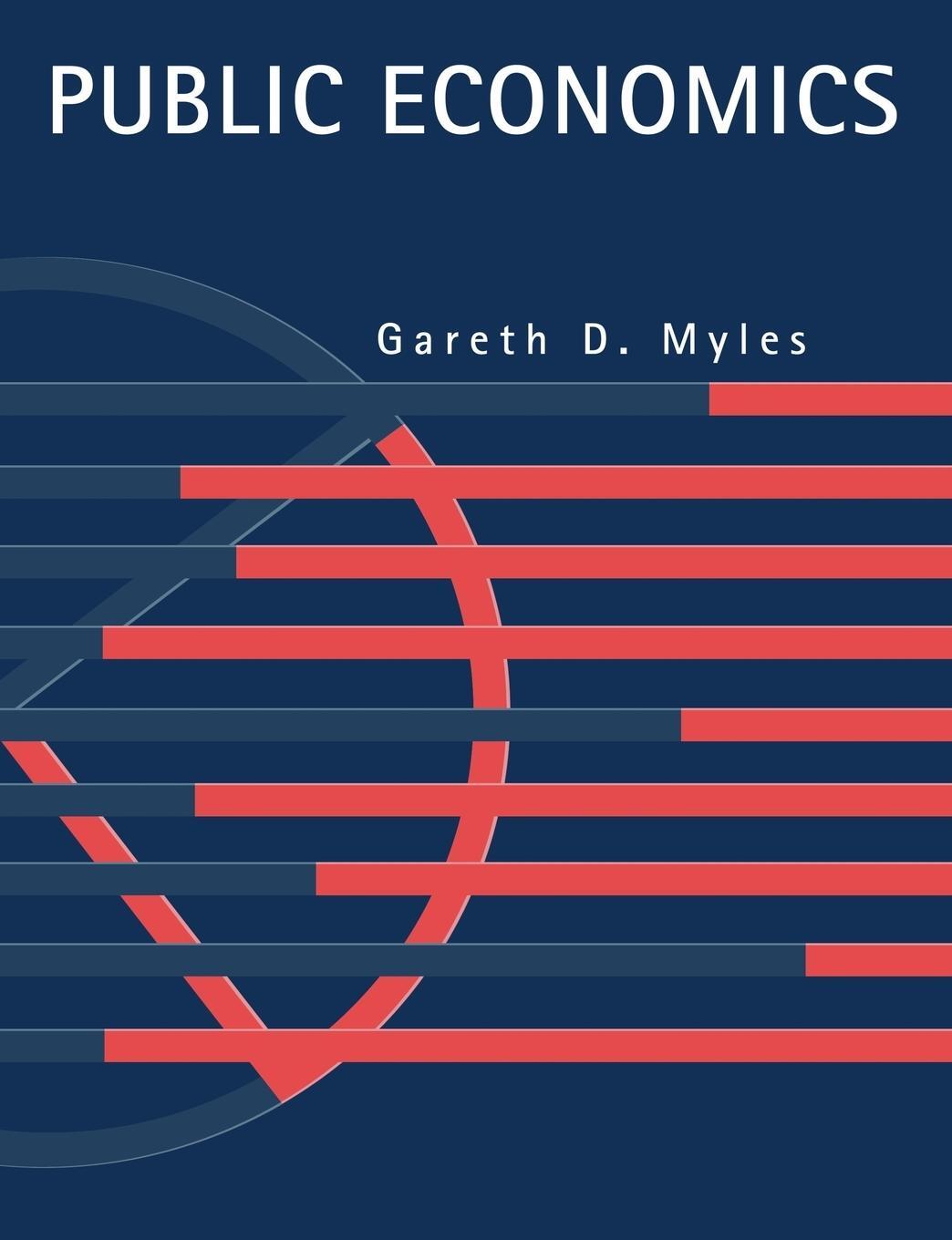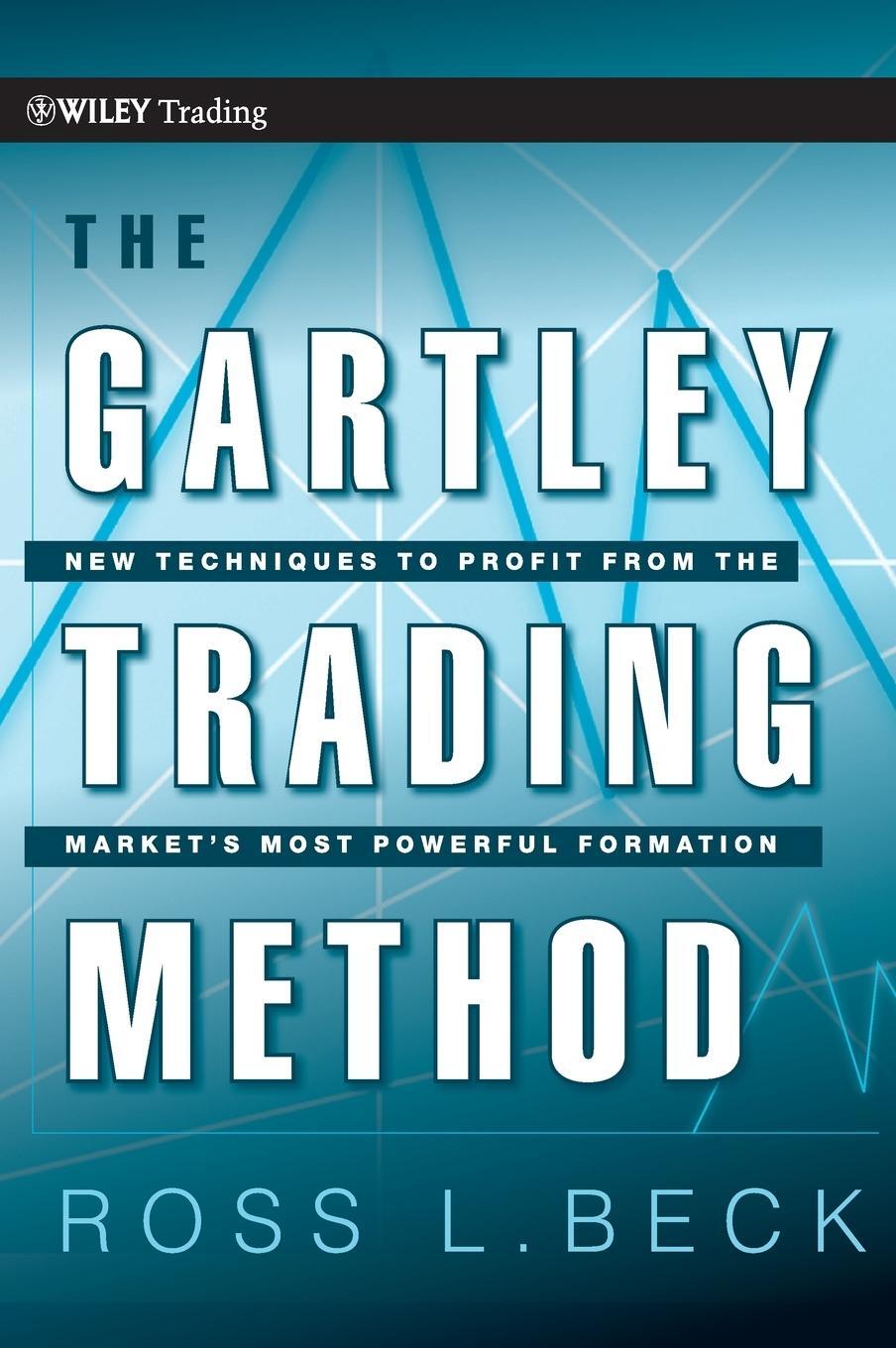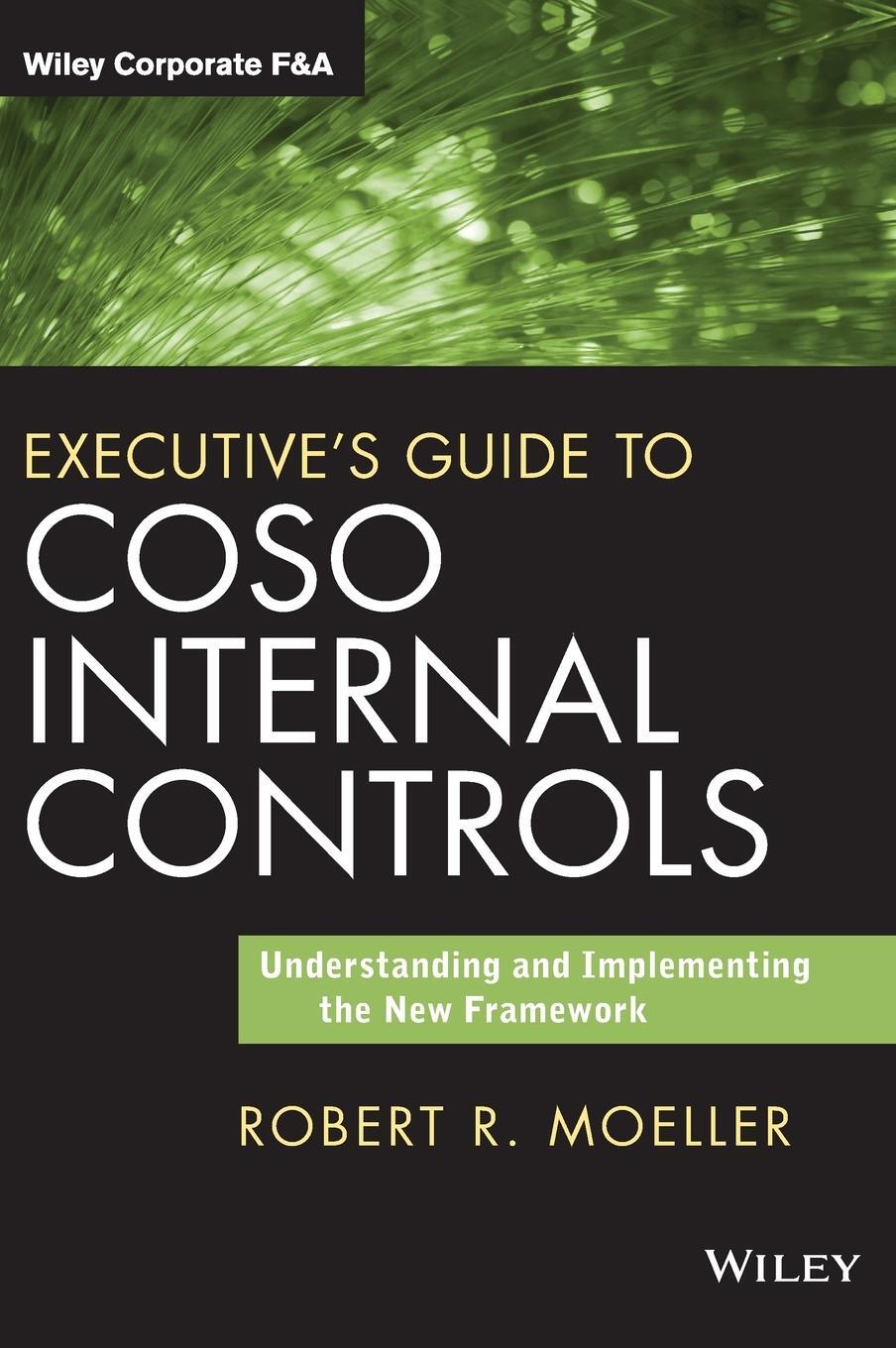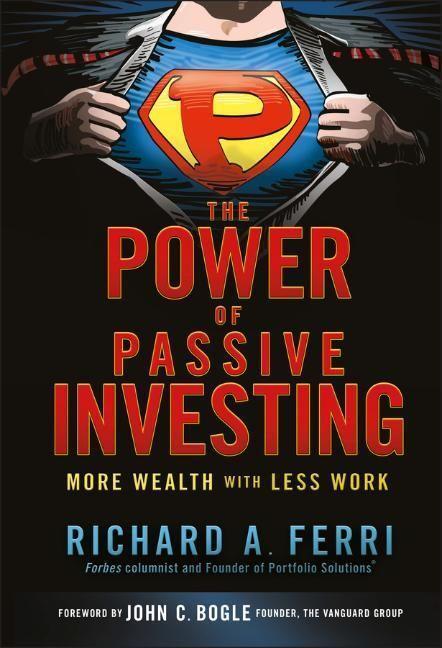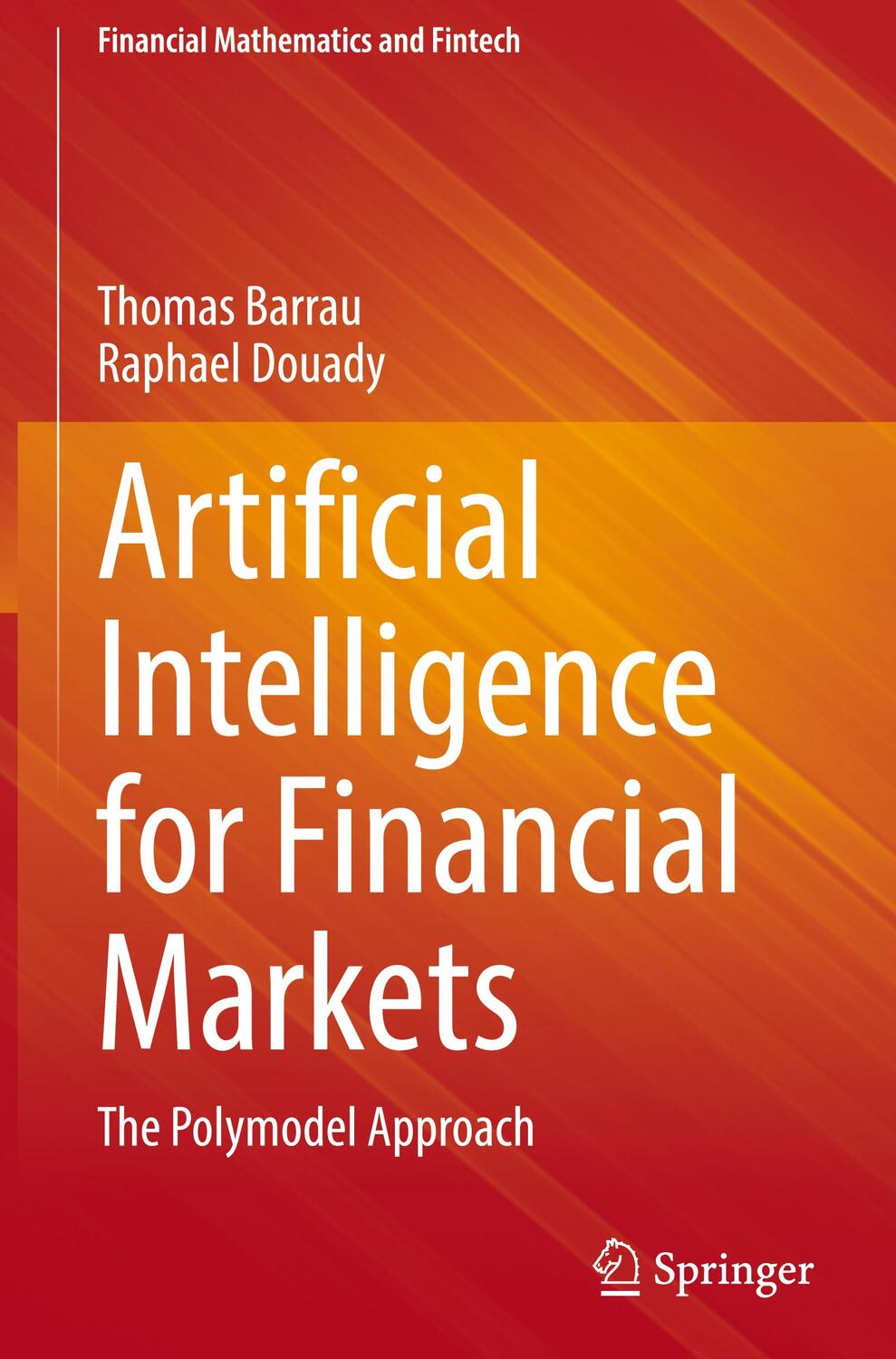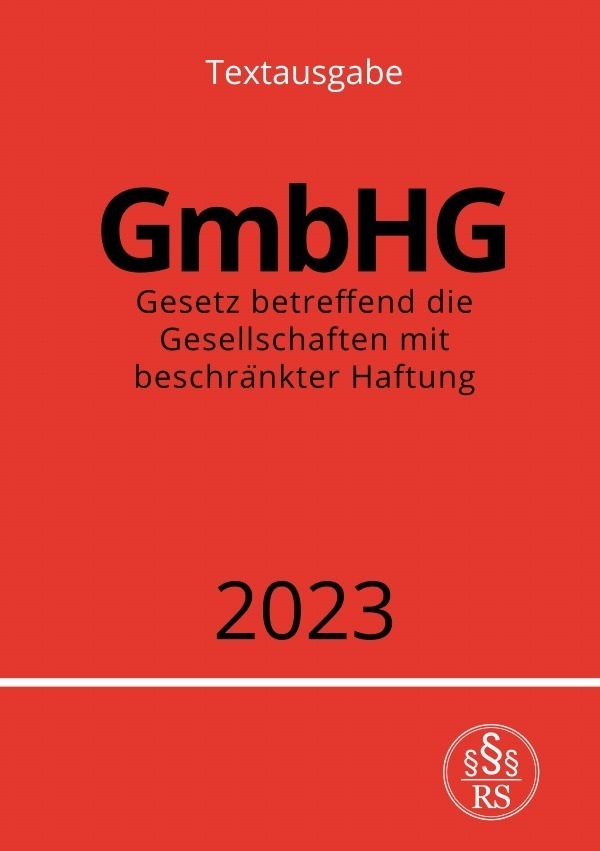77,20 €*
Versandkostenfrei per Post / DHL
auf Lager, Lieferzeit 1-2 Werktage
Modern portfolio theory (MPT), which originated with Harry Markowitz's seminal paper "Portfolio Selection" in 1952, has stood the test of time and continues to be the intellectual foundation for real-world portfolio management. This book presents a comprehensive picture of MPT in a manner that can be effectively used by financial practitioners and understood by students.
Modern Portfolio Theory provides a summary of the important findings from all of the financial research done since MPT was created and presents all the MPT formulas and models using one consistent set of mathematical symbols. Opening with an informative introduction to the concepts of probability and utility theory, it quickly moves on to discuss Markowitz's seminal work on the topic with a thorough explanation of the underlying mathematics.
* Analyzes portfolios of all sizes and types, shows how the advanced findings and formulas are derived, and offers a concise and comprehensive review of MPT literature
* Addresses logical extensions to Markowitz's work, including the Capital Asset Pricing Model, Arbitrage Pricing Theory, portfolio ranking models, and performance attribution
* Considers stock market developments like decimalization, high frequency trading, and algorithmic trading, and reveals how they align with MPT
* Companion Website contains Excel spreadsheets that allow you to compute and graph Markowitz efficient frontiers with riskless and risky assets
If you want to gain a complete understanding of modern portfolio theory this is the book you need to read.
Modern portfolio theory (MPT), which originated with Harry Markowitz's seminal paper "Portfolio Selection" in 1952, has stood the test of time and continues to be the intellectual foundation for real-world portfolio management. This book presents a comprehensive picture of MPT in a manner that can be effectively used by financial practitioners and understood by students.
Modern Portfolio Theory provides a summary of the important findings from all of the financial research done since MPT was created and presents all the MPT formulas and models using one consistent set of mathematical symbols. Opening with an informative introduction to the concepts of probability and utility theory, it quickly moves on to discuss Markowitz's seminal work on the topic with a thorough explanation of the underlying mathematics.
* Analyzes portfolios of all sizes and types, shows how the advanced findings and formulas are derived, and offers a concise and comprehensive review of MPT literature
* Addresses logical extensions to Markowitz's work, including the Capital Asset Pricing Model, Arbitrage Pricing Theory, portfolio ranking models, and performance attribution
* Considers stock market developments like decimalization, high frequency trading, and algorithmic trading, and reveals how they align with MPT
* Companion Website contains Excel spreadsheets that allow you to compute and graph Markowitz efficient frontiers with riskless and risky assets
If you want to gain a complete understanding of modern portfolio theory this is the book you need to read.
JACK CLARK FRANCIS is Professor of Economics and Finance at Bernard M. Baruch College in New York City. His research focuses on investments, banking, and monetary economics, and he has had dozens of articles published in many refereed academic, business, and government journals. Dr. Francis was an assistant professor of finance at the University of Pennsylvania's Wharton School of Finance for five years and was a Federal Reserve economist for two years. He received his bachelor's and MBA from Indiana University and earned his PhD in finance from the University of Washington in Seattle.
DONGCHEOL KIM is a Professor of Finance at Korea University in Seoul. He served as president of the Korea Securities Association and editor-in-chief of the Asia-Pacific Journal of Financial Studies. Previously, he was a finance professor at Rutgers University. Kim has published articles in Financial Management, the Accounting Review, Journal of Financial and Quantitative Analysis, Journal of Economic Research, Journal of Finance, and Journal of the Futures Market.
Preface xvii
CHAPTER 1 Introduction 1
1.1 The Portfolio Management Process 1
1.2 The Security Analyst's Job 1
1.3 Portfolio Analysis 2
1.4 Portfolio Selection 5
1.5 The Mathematics is Segregated 6
1.6 Topics to be Discussed 6
Appendix: Various Rates of Return 7
PART ONE Probability Foundations
CHAPTER 2 Assessing Risk 13
2.1 Mathematical Expectation 13
2.2 What Is Risk? 15
2.3 Expected Return 16
2.4 Risk of a Security 17
2.5 Covariance of Returns 18
2.6 Correlation of Returns 19
2.7 Using Historical Returns 20
2.8 Data Input Requirements 22
2.9 Portfolio Weights 22
2.10 A Portfolio's Expected Return 23
2.11 Portfolio Risk 23
2.12 Summary of Notations and Formulas 27
CHAPTER 3 Risk and Diversification 29
3.1 Reconsidering Risk 29
3.2 Utility Theory 32
3.3 Risk-Return Space 36
3.4 Diversification 38
3.5 Conclusions 41
PART TWO Utility Foundations
CHAPTER 4 Single-Period Utility Analysis 45
4.1 Basic Utility Axioms 46
4.2 The Utility of Wealth Function 47
4.3 Utility of Wealth and Returns 47
4.4 Expected Utility of Returns 48
4.5 Risk Attitudes 52
4.6 Absolute Risk Aversion 59
4.7 Relative Risk Aversion 60
4.8 Measuring Risk Aversion 62
4.9 Portfolio Analysis 66
4.10 Indifference Curves 69
4.11 Summary and Conclusions 74
Appendix: Risk Aversion and Indifference Curves 75
PART THREE Mean-Variance Portfolio Analysis
CHAPTER 5 Graphical Portfolio Analysis 85
5.1 Delineating Efficient Portfolios 85
5.2 Portfolio Analysis Inputs 86
5.3 Two-Asset Isomean Lines 87
5.4 Two-Asset Isovariance Ellipses 90
5.5 Three-Asset Portfolio Analysis 92
5.6 Legitimate Portfolios 102
5.7 ''Unusual'' Graphical Solutions Don't Exist 103
5.8 Representing Constraints Graphically 103
5.9 The Interior Decorator Fallacy 103
5.10 Summary 104
Appendix: Quadratic Equations 105
CHAPTER 6 Efficient Portfolios 113
6.1 Risk and Return for Two-Asset Portfolios 113
6.2 The Opportunity Set 114
6.3 Markowitz Diversification 120
6.4 Efficient Frontier without the Risk-Free Asset 123
6.5 Introducing a Risk-Free Asset 126
6.6 Summary and Conclusions 131
Appendix: Equations for a Relationship between Erp) and sigmap
CHAPTER 7 Advanced Mathematical Portfolio Analysis 135
7.1 Efficient Portfolios without a Risk-Free Asset 135
7.2 Efficient Portfolios with a Risk-Free Asset 146
7.3 Identifying the Tangency Portfolio 150
7.4 Summary and Conclusions 152
Appendix: Mathematical Derivation of the Efficient Frontier 152
CHAPTER 8 Index Models and Return-Generating Process 165
8.1 Single-Index Models 165
8.2 Efficient Frontier and the Single-Index Model 178
8.3 Two-Index Models 186
8.4 Multi-Index Models 189
8.5 Conclusions 190
Appendix: Index Models 191
PART FOUR Non-Mean-Variance Portfolios
CHAPTER 9 Non-Normal Distributions of Returns 201
9.1 Stable Paretian Distributions 201
9.2 The Student's t -Distribution 204
9.3 Mixtures of Normal Distributions 204
9.4 Poisson Jump-Diffusion Process 206
9.5 Lognormal Distributions 206
9.6 Conclusions 213
CHAPTER 10 Non-Mean-Variance Investment Decisions 215
10.1 Geometric Mean Return Criterion 215
10.2 The Safety-First Criterion 218
10.3 Semivariance Analysis 228
10.4 Stochastic Dominance Criterion 236
10.5 Mean-Variance-Skewness Analysis 246
10.6 Summary and Conclusions 254
Appendix A: Stochastic Dominance 254
Appendix B: Expected Utility as a Function of Three Moments 257
CHAPTER 11 Risk Management: Value at Risk 261
11.1 VaR of a Single Asset 261
11.2 Portfolio VaR 263
11.3 Decomposition of a Portfolio's VaR 265
11.4 Other VaRs 269
11.5 Methods of Measuring VaR 270
11.6 Estimation of Volatilities 277
11.7 The Accuracy of VaR Models 282
11.8 Summary and Conclusions 285
Appendix: The Delta-Gamma Method 285
PART FIVE Asset Pricing Models
CHAPTER 12 The Capital Asset Pricing Model 291
12.1 Underlying Assumptions 291
12.2 The Capital Market Line 292
12.3 The Capital Asset Pricing Model 295
12.4 Over- and Under-priced Securities 299
12.5 The Market Model and the CAPM 300
12.6 Summary and Conclusions 301
Appendix: Derivations of the CAPM 301
CHAPTER 13 Extensions of the Standard CAPM 311
13.1 Risk-Free Borrowing or Lending 311
13.2 Homogeneous Expectations 316
13.3 Perfect Markets 318
13.4 Unmarketable Assets 322
13.5 Summary and Conclusions 323
Appendix: Derivations of a Non-Standard CAPM 324
CHAPTER 14 Empirical Tests of the CAPM 333
14.1 Time-Series Tests of the CAPM 333
14.2 Cross-Sectional Tests of the CAPM 335
14.3 Empirical Misspecifications in Cross-Sectional Regression Tests 345
14.4 Multivariate Tests 353
14.5 Is the CAPM Testable? 356
14.6 Summary and Conclusions 357
CHAPTER 15 Continuous-Time Asset Pricing Models 361
15.1 Intertemporal CAPM (ICAPM) 361
15.2 The Consumption-Based CAPM (CCAPM) 363
15.3 Conclusions 366
Appendix: Lognormality and the Consumption-Based CAPM 367
CHAPTER 16 Arbitrage Pricing Theory 371
16.1 Arbitrage Concepts 371
16.2 Index Arbitrage 375
16.4 Asset Pricing on a Security Market Plane 383
16.5 Contrasting APT with CAPM 385
16.6 Empirical Evidence 386
16.7 Comparing the APT and CAPM Empirically 388
16.8 Conclusions 389
PART SIX Implementing the Theory
CHAPTER 17 Portfolio Construction and Selection 395
17.1 Efficient Markets 395
17.2 Using Portfolio Theories to Construct and Select Portfolios 398
17.3 Security Analysis 400
17.4 Market Timing 401
17.5 Diversification 407
17.6 Constructing an Active Portfolio 415
17.7 Portfolio Revision 424
17.8 Summary and Conclusions 430
Appendix: Proofs for Some Ratios from Active Portfolios 431
CHAPTER 18 Portfolio Performance Evaluation 435
18.1 Mutual Fund Returns 435
18.2 Portfolio Performance Analysis in the Good Old Days 436
18.3 Capital Market Theory Assumptions 438
18.4 Single-Parameter Portfolio Performance Measures 438
18.5 Market Timing 449
18.6 Comparing Single-Parameter Portfolio Performance Measures 452
18.7 The Index of Total Portfolio Risk (ITPR) and the Portfolio Beta 454
18.8 Measurement Problems 457
18.9 Do Winners or Losers Repeat? 461
18.10 Summary about Investment Performance Evaluation 465
Appendix: Sharpe Ratio of an Active Portfolio 467
CHAPTER 19 Performance Attribution 473
19.1 Factor Model Analysis 474
19.2 Return-Based Style Analysis 475
19.3 Return Decomposition-Based Analysis 479
19.4 Conclusions 485
Appendix: Regression Coefficients Estimation with Constraints 486
CHAPTER 20 Stock Market Developments 489
20.1 Recent NYSE Consolidations 489
20.2 International Securities Exchange (ISE) 492
20.3 Nasdaq 492
20.4 Downward Pressures on Transactions Costs 494
20.5 The Venerable Limit Order 497
20.6 Market Microstructure 498
20.7 High-Frequency Trading 499
20.8 Alternative Trading Systems (ATSs) 500
20.9 Algorithmic Trading 501
20.10 Symbiotic Stock Market Developments 505
20.11 Detrimental Stock Market Developments 505
20.12 Summary and Conclusions 506
Mathematical Appendixes 509
Bibliography 519
About the Authors 539
Author Index 541
Subject Index 547
| Erscheinungsjahr: | 2013 |
|---|---|
| Fachbereich: | Betriebswirtschaft |
| Genre: | Wirtschaft |
| Rubrik: | Recht & Wirtschaft |
| Medium: | Buch |
| Seiten: | 576 |
| Inhalt: | 576 S. |
| ISBN-13: | 9781118370520 |
| ISBN-10: | 111837052X |
| Sprache: | Englisch |
| Einband: | Gebunden |
| Autor: |
Francis, Jack Clark
Kim, Dongcheol |
| Hersteller: |
Wiley
John Wiley & Sons |
| Maße: | 260 x 183 x 35 mm |
| Von/Mit: | Jack Clark Francis (u. a.) |
| Erscheinungsdatum: | 22.01.2013 |
| Gewicht: | 1,266 kg |
JACK CLARK FRANCIS is Professor of Economics and Finance at Bernard M. Baruch College in New York City. His research focuses on investments, banking, and monetary economics, and he has had dozens of articles published in many refereed academic, business, and government journals. Dr. Francis was an assistant professor of finance at the University of Pennsylvania's Wharton School of Finance for five years and was a Federal Reserve economist for two years. He received his bachelor's and MBA from Indiana University and earned his PhD in finance from the University of Washington in Seattle.
DONGCHEOL KIM is a Professor of Finance at Korea University in Seoul. He served as president of the Korea Securities Association and editor-in-chief of the Asia-Pacific Journal of Financial Studies. Previously, he was a finance professor at Rutgers University. Kim has published articles in Financial Management, the Accounting Review, Journal of Financial and Quantitative Analysis, Journal of Economic Research, Journal of Finance, and Journal of the Futures Market.
Preface xvii
CHAPTER 1 Introduction 1
1.1 The Portfolio Management Process 1
1.2 The Security Analyst's Job 1
1.3 Portfolio Analysis 2
1.4 Portfolio Selection 5
1.5 The Mathematics is Segregated 6
1.6 Topics to be Discussed 6
Appendix: Various Rates of Return 7
PART ONE Probability Foundations
CHAPTER 2 Assessing Risk 13
2.1 Mathematical Expectation 13
2.2 What Is Risk? 15
2.3 Expected Return 16
2.4 Risk of a Security 17
2.5 Covariance of Returns 18
2.6 Correlation of Returns 19
2.7 Using Historical Returns 20
2.8 Data Input Requirements 22
2.9 Portfolio Weights 22
2.10 A Portfolio's Expected Return 23
2.11 Portfolio Risk 23
2.12 Summary of Notations and Formulas 27
CHAPTER 3 Risk and Diversification 29
3.1 Reconsidering Risk 29
3.2 Utility Theory 32
3.3 Risk-Return Space 36
3.4 Diversification 38
3.5 Conclusions 41
PART TWO Utility Foundations
CHAPTER 4 Single-Period Utility Analysis 45
4.1 Basic Utility Axioms 46
4.2 The Utility of Wealth Function 47
4.3 Utility of Wealth and Returns 47
4.4 Expected Utility of Returns 48
4.5 Risk Attitudes 52
4.6 Absolute Risk Aversion 59
4.7 Relative Risk Aversion 60
4.8 Measuring Risk Aversion 62
4.9 Portfolio Analysis 66
4.10 Indifference Curves 69
4.11 Summary and Conclusions 74
Appendix: Risk Aversion and Indifference Curves 75
PART THREE Mean-Variance Portfolio Analysis
CHAPTER 5 Graphical Portfolio Analysis 85
5.1 Delineating Efficient Portfolios 85
5.2 Portfolio Analysis Inputs 86
5.3 Two-Asset Isomean Lines 87
5.4 Two-Asset Isovariance Ellipses 90
5.5 Three-Asset Portfolio Analysis 92
5.6 Legitimate Portfolios 102
5.7 ''Unusual'' Graphical Solutions Don't Exist 103
5.8 Representing Constraints Graphically 103
5.9 The Interior Decorator Fallacy 103
5.10 Summary 104
Appendix: Quadratic Equations 105
CHAPTER 6 Efficient Portfolios 113
6.1 Risk and Return for Two-Asset Portfolios 113
6.2 The Opportunity Set 114
6.3 Markowitz Diversification 120
6.4 Efficient Frontier without the Risk-Free Asset 123
6.5 Introducing a Risk-Free Asset 126
6.6 Summary and Conclusions 131
Appendix: Equations for a Relationship between Erp) and sigmap
CHAPTER 7 Advanced Mathematical Portfolio Analysis 135
7.1 Efficient Portfolios without a Risk-Free Asset 135
7.2 Efficient Portfolios with a Risk-Free Asset 146
7.3 Identifying the Tangency Portfolio 150
7.4 Summary and Conclusions 152
Appendix: Mathematical Derivation of the Efficient Frontier 152
CHAPTER 8 Index Models and Return-Generating Process 165
8.1 Single-Index Models 165
8.2 Efficient Frontier and the Single-Index Model 178
8.3 Two-Index Models 186
8.4 Multi-Index Models 189
8.5 Conclusions 190
Appendix: Index Models 191
PART FOUR Non-Mean-Variance Portfolios
CHAPTER 9 Non-Normal Distributions of Returns 201
9.1 Stable Paretian Distributions 201
9.2 The Student's t -Distribution 204
9.3 Mixtures of Normal Distributions 204
9.4 Poisson Jump-Diffusion Process 206
9.5 Lognormal Distributions 206
9.6 Conclusions 213
CHAPTER 10 Non-Mean-Variance Investment Decisions 215
10.1 Geometric Mean Return Criterion 215
10.2 The Safety-First Criterion 218
10.3 Semivariance Analysis 228
10.4 Stochastic Dominance Criterion 236
10.5 Mean-Variance-Skewness Analysis 246
10.6 Summary and Conclusions 254
Appendix A: Stochastic Dominance 254
Appendix B: Expected Utility as a Function of Three Moments 257
CHAPTER 11 Risk Management: Value at Risk 261
11.1 VaR of a Single Asset 261
11.2 Portfolio VaR 263
11.3 Decomposition of a Portfolio's VaR 265
11.4 Other VaRs 269
11.5 Methods of Measuring VaR 270
11.6 Estimation of Volatilities 277
11.7 The Accuracy of VaR Models 282
11.8 Summary and Conclusions 285
Appendix: The Delta-Gamma Method 285
PART FIVE Asset Pricing Models
CHAPTER 12 The Capital Asset Pricing Model 291
12.1 Underlying Assumptions 291
12.2 The Capital Market Line 292
12.3 The Capital Asset Pricing Model 295
12.4 Over- and Under-priced Securities 299
12.5 The Market Model and the CAPM 300
12.6 Summary and Conclusions 301
Appendix: Derivations of the CAPM 301
CHAPTER 13 Extensions of the Standard CAPM 311
13.1 Risk-Free Borrowing or Lending 311
13.2 Homogeneous Expectations 316
13.3 Perfect Markets 318
13.4 Unmarketable Assets 322
13.5 Summary and Conclusions 323
Appendix: Derivations of a Non-Standard CAPM 324
CHAPTER 14 Empirical Tests of the CAPM 333
14.1 Time-Series Tests of the CAPM 333
14.2 Cross-Sectional Tests of the CAPM 335
14.3 Empirical Misspecifications in Cross-Sectional Regression Tests 345
14.4 Multivariate Tests 353
14.5 Is the CAPM Testable? 356
14.6 Summary and Conclusions 357
CHAPTER 15 Continuous-Time Asset Pricing Models 361
15.1 Intertemporal CAPM (ICAPM) 361
15.2 The Consumption-Based CAPM (CCAPM) 363
15.3 Conclusions 366
Appendix: Lognormality and the Consumption-Based CAPM 367
CHAPTER 16 Arbitrage Pricing Theory 371
16.1 Arbitrage Concepts 371
16.2 Index Arbitrage 375
16.4 Asset Pricing on a Security Market Plane 383
16.5 Contrasting APT with CAPM 385
16.6 Empirical Evidence 386
16.7 Comparing the APT and CAPM Empirically 388
16.8 Conclusions 389
PART SIX Implementing the Theory
CHAPTER 17 Portfolio Construction and Selection 395
17.1 Efficient Markets 395
17.2 Using Portfolio Theories to Construct and Select Portfolios 398
17.3 Security Analysis 400
17.4 Market Timing 401
17.5 Diversification 407
17.6 Constructing an Active Portfolio 415
17.7 Portfolio Revision 424
17.8 Summary and Conclusions 430
Appendix: Proofs for Some Ratios from Active Portfolios 431
CHAPTER 18 Portfolio Performance Evaluation 435
18.1 Mutual Fund Returns 435
18.2 Portfolio Performance Analysis in the Good Old Days 436
18.3 Capital Market Theory Assumptions 438
18.4 Single-Parameter Portfolio Performance Measures 438
18.5 Market Timing 449
18.6 Comparing Single-Parameter Portfolio Performance Measures 452
18.7 The Index of Total Portfolio Risk (ITPR) and the Portfolio Beta 454
18.8 Measurement Problems 457
18.9 Do Winners or Losers Repeat? 461
18.10 Summary about Investment Performance Evaluation 465
Appendix: Sharpe Ratio of an Active Portfolio 467
CHAPTER 19 Performance Attribution 473
19.1 Factor Model Analysis 474
19.2 Return-Based Style Analysis 475
19.3 Return Decomposition-Based Analysis 479
19.4 Conclusions 485
Appendix: Regression Coefficients Estimation with Constraints 486
CHAPTER 20 Stock Market Developments 489
20.1 Recent NYSE Consolidations 489
20.2 International Securities Exchange (ISE) 492
20.3 Nasdaq 492
20.4 Downward Pressures on Transactions Costs 494
20.5 The Venerable Limit Order 497
20.6 Market Microstructure 498
20.7 High-Frequency Trading 499
20.8 Alternative Trading Systems (ATSs) 500
20.9 Algorithmic Trading 501
20.10 Symbiotic Stock Market Developments 505
20.11 Detrimental Stock Market Developments 505
20.12 Summary and Conclusions 506
Mathematical Appendixes 509
Bibliography 519
About the Authors 539
Author Index 541
Subject Index 547
| Erscheinungsjahr: | 2013 |
|---|---|
| Fachbereich: | Betriebswirtschaft |
| Genre: | Wirtschaft |
| Rubrik: | Recht & Wirtschaft |
| Medium: | Buch |
| Seiten: | 576 |
| Inhalt: | 576 S. |
| ISBN-13: | 9781118370520 |
| ISBN-10: | 111837052X |
| Sprache: | Englisch |
| Einband: | Gebunden |
| Autor: |
Francis, Jack Clark
Kim, Dongcheol |
| Hersteller: |
Wiley
John Wiley & Sons |
| Maße: | 260 x 183 x 35 mm |
| Von/Mit: | Jack Clark Francis (u. a.) |
| Erscheinungsdatum: | 22.01.2013 |
| Gewicht: | 1,266 kg |

